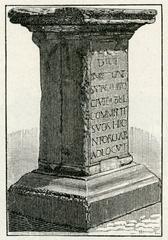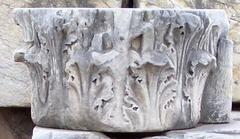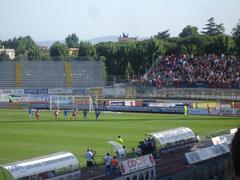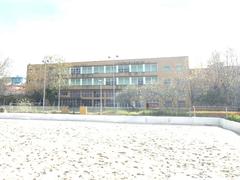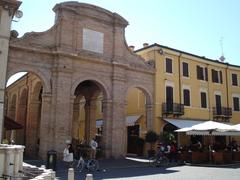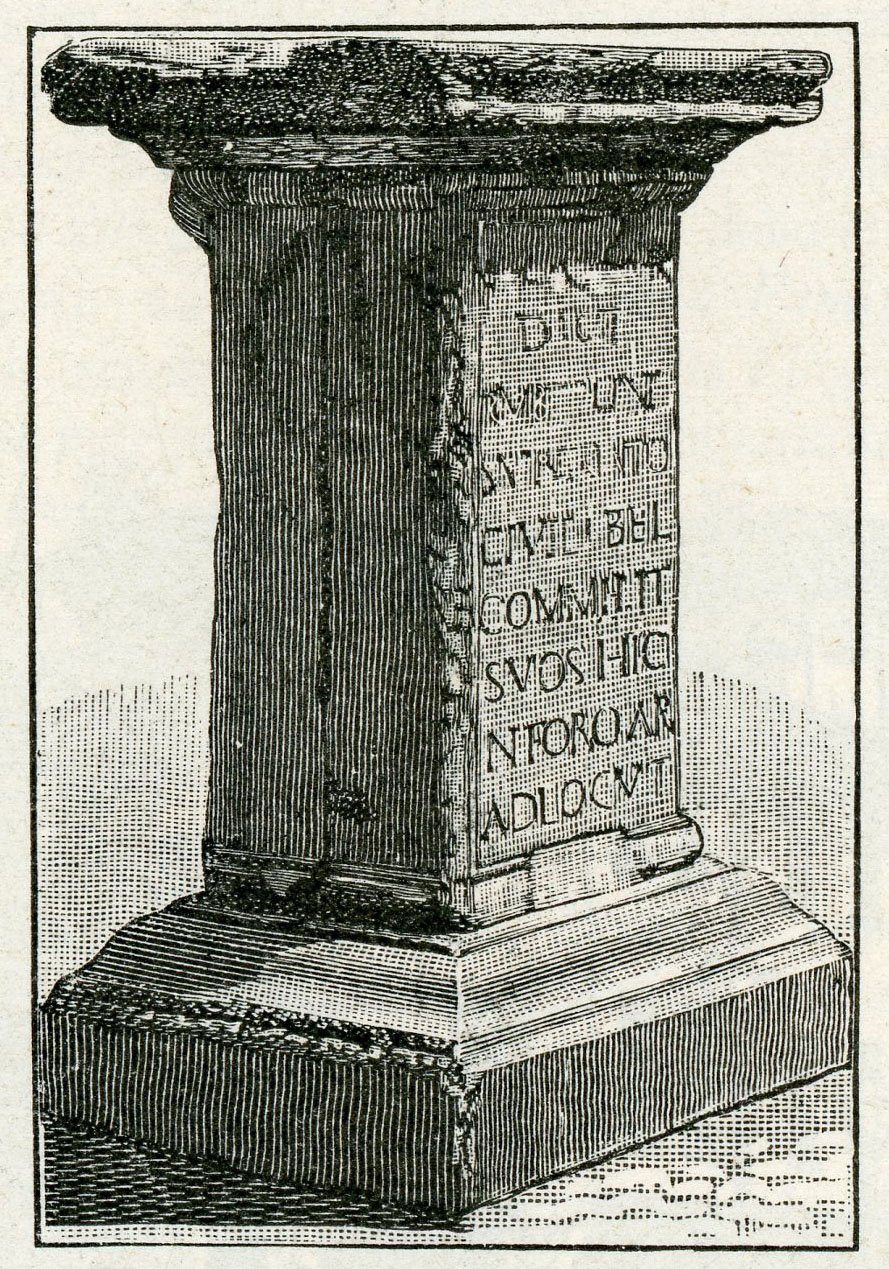
Visiting the Statue of Iulius Caesar in Rimini, Italy: Tickets, Hours, and Insider Tips
Date: 14/06/2025
Introduction
In the heart of Rimini’s old town lies Piazza Tre Martiri, a square layered with history and home to the Statue of Iulius Caesar. This monument stands not only as a tribute to one of history’s most influential figures but as a living symbol of Rimini’s enduring connection to its Roman roots. In this guide, you’ll discover the statue’s historical significance, how to visit, practical information, nearby attractions, and tips to make the most of your journey through Rimini’s ancient and modern landscape (italyscapes.com; velvetescape.com).
Historical Background: Julius Caesar’s Legacy in Rimini
The Roman Foundation
Founded in 268 BCE as Ariminum, Rimini was a pivotal Roman colony at the junction of the Via Flaminia and Via Emilia, facilitating military, commercial, and political activity throughout the Republic and Empire (italyscapes.com). The city’s strategic importance became legendary in 49 BCE when Julius Caesar crossed the Rubicon River—a decisive act that initiated the Roman Civil War and the Republic’s transformation into an empire.
Caesar’s Fateful Speech
After his historic crossing, Caesar entered Ariminum and addressed his troops in the forum, now Piazza Tre Martiri, declaring “Alea iacta est” (“The die is cast”). This moment not only altered Roman history but is also memorialized in Rimini’s urban landscape (waymarking.com).
Commemorations Through the Ages
The Column of Julius Caesar was erected in 1555 to mark the spot of Caesar’s speech, symbolically linking the city’s Renaissance transformation to its Roman past. The modern bronze statue, inspired by classical Roman art and installed in the 20th century, visually anchors Rimini’s identity as a crossroads of empires (romanemperors.com).
Piazza Tre Martiri: A Living Historical Setting
Piazza Tre Martiri, the former Roman forum, has evolved through the centuries:
- Roman era: Site of the ancient forum and major crossroads.
- Middle Ages: Known as Piazza delle Erbe, hosting markets.
- 16th century: Remodelled with arcades and the construction of the Clock Tower.
- WWII: Renamed to honor three partisans executed there.
The square’s architecture—featuring the Clock Tower, Palazzo Tingoli, and the Column of Julius Caesar—creates a unique setting where history is felt at every turn (italyscapes.com).
Statue of Iulius Caesar: Artistic and Symbolic Features
The current bronze statue depicts Caesar in classic military garb, recalling ancient Roman busts and coins. Its detailed craftsmanship—laurel wreath, armor, and commanding posture—evokes the power and gravitas of Rome’s greatest general (romanemperors.com). The statue stands near the column (not on the central plinth), reflecting Rimini’s layered and sometimes ambivalent relationship with its Roman and 20th-century past (medium.com).
Practical Information: Visiting Hours, Tickets, and Accessibility
Location
- Piazza Tre Martiri, 47921 Rimini RN, Italy
Visiting Hours
- The statue and square are accessible 24/7 as they are in an open public space (intravel.net).
Tickets
- Free admission; no ticket required.
Accessibility
- The piazza is pedestrian-friendly, flat, and wheelchair accessible.
Getting There
- On foot: 10 minutes from Rimini’s main train station.
- By bus: Stops on Corso d’Augusto and Via IV Novembre.
- By car: Public parking available nearby.
What to Expect on Your Visit
- The statue is located in a corner of the piazza, near a bank and close to Corso d’Augusto, not on the main plinth (medium.com).
- The central plinth, historically associated with Caesar’s speech, remains unadorned—a unique detail that highlights the square’s complex history.
- The lively square is surrounded by the Tempietto di Sant’Antonio, Chiesa dei Paolotti, shops, cafés, and restaurants (The Crazy Tourist).
Nearby Roman and Cultural Attractions
- Arch of Augustus: The oldest surviving Roman triumphal arch in Italy.
- Ponte di Tiberio (Tiberius Bridge): 2,000-year-old Roman bridge still in use.
- Tempio Malatestiano: Renaissance cathedral with notable artworks.
- Museo della Città: Showcases Rimini’s Roman and medieval past.
- Domus del Chirurgo: Excavated Roman villa with mosaics and surgical tools.
- Borgo San Giuliano: Colorful neighborhood famous for Fellini murals (velvetescape.com).
Visitor Tips
- Photography: Early mornings and late afternoons offer the best lighting. Capture both the statue and the column/plinth for context.
- Guided Tours: Join a walking tour for deeper insights into Rimini’s Roman history.
- Events: The piazza hosts markets, festivals, and the annual Ides of March commemoration.
- Amenities: Cafés and restaurants in the square offer traditional Emilia-Romagna cuisine. Public restrooms are nearby (usually for a small fee).
- Cultural Etiquette: The square is also a WWII memorial site. Be respectful; laying flowers is a common gesture.
Frequently Asked Questions (FAQ)
Q: Is there an entrance fee for the statue?
A: No, it’s free to visit.
Q: What are the best times to visit?
A: Early morning or late afternoon for pleasant lighting and fewer crowds.
Q: Is the site wheelchair accessible?
A: Yes, the area is flat and paved.
Q: Are guided tours available in English?
A: Yes, several local operators offer English-language tours.
Q: Can I visit at night?
A: Yes, the square is accessible 24/7, but daytime visits are safer and offer better visibility.
Enhance Your Experience
- Download the Audiala app for audio guides and interactive maps of Rimini’s historical sites.
- Check Rimini’s official tourism website for the latest events and updates.
- For more on Roman Rimini, explore the Arch of Augustus, Tiberius Bridge, and local museums.
Visuals and Interactive Media
- Include high-quality images of the statue and square (alt text: “Statue of Julius Caesar in Piazza Tre Martiri, Rimini”).
- Embed a map showing Piazza Tre Martiri and key Roman sites.
- Link to virtual tours of Rimini’s historic center where available.
Conclusion
The Statue of Iulius Caesar in Rimini is not just a photo opportunity—it’s an invitation to step into the crossroads of ancient and modern Italy. Open and accessible to all, the monument and its piazza are vital testaments to Rimini’s pivotal place in Roman—and world—history. Whether you’re exploring on your own or with a guide, let this remarkable space inspire your journey through the layers of time and culture that define Rimini.
Plan your visit, share your experiences, and keep Rimini’s Roman legacy alive.
Sources and Further Reading
- italyscapes.com
- velvetescape.com
- intravel.net
- visitrimini.com
- medium.com
- romanemperors.com
- World History et cetera
- The Crazy Tourist
